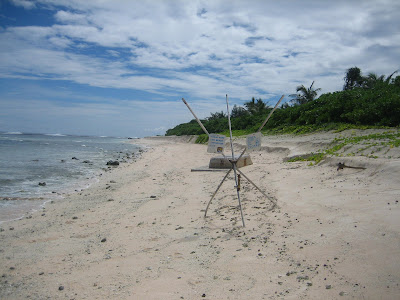While I was in Guam, I hung out with friends and made new ones. Everything I did was indoors, we met, ate and partied indoors. On our last day in Guam, Peter asked me if I was interested in going to Ritidian Point in Guam. I was a little hesitant because we we’re going back to Saipan at noon and it was scorching hot at 8:30 a.m. He said to me, “lets enjoy nature now”, he wanted to see the coral fossil rocks and the beach, and I felt like it was going to be such a chore, but thought, what is there to lose.
Ritidian Point is a National Wildlife Refuge that lies on the northernmost tip of Guam. It used to be a restricted military area now accessible to the public. Ritidian consists of many acres of native limestone forest and marine habitat.



I was so amazed by Ritidian’s beauty from the drive downhill, it was my first time. When we got to the bottom, we parked the car and took a short hike to the beach. I immediately took out my camera much to Peter’s surprise that I had it with me, and I started snapping away at the beautiful white sand beach. The sand was so soft that I had to take my zories off to feel its softness, and Peter did the same. I thought it was one of most beautiful places in Guam and in a few years, this attractive scenery might not be here anymore. I then started to appreciate the beauty instantly.



As an avid shell collector, I had no urge on that day to collect some of the beautiful shells that were spread throughout the beach. I realized that I want to leave everything as is, the way nature had left it. I could just take a picture and it will be mine forever.




After the walk on the beach, we hiked back to the car to try to get to the rocks, which we then realized that it was inaccessible because it was all fenced in. On the hike back, we came across a tangantangan (Leucaena leucaena) patch. Peter suggested I take pictures of it. We learned in the Guam meetings from a U.S. Fish and Wildlife staffer that it is still a mystery on how the tangantangan arrived in the Mariana Islands. Rumors have it that seeds were sown through the air after the war, but no proof has been found as of yet. If anyone knows, how the tangantangan originated in the Mariana Islands, please let me know.


We got into the car and drove up the hill to see if we can find some fossil rocks, but we didn’t. As we were leaving Ritidian, I was flipping through the pictures I just took, and at that moment, my blog was born.

